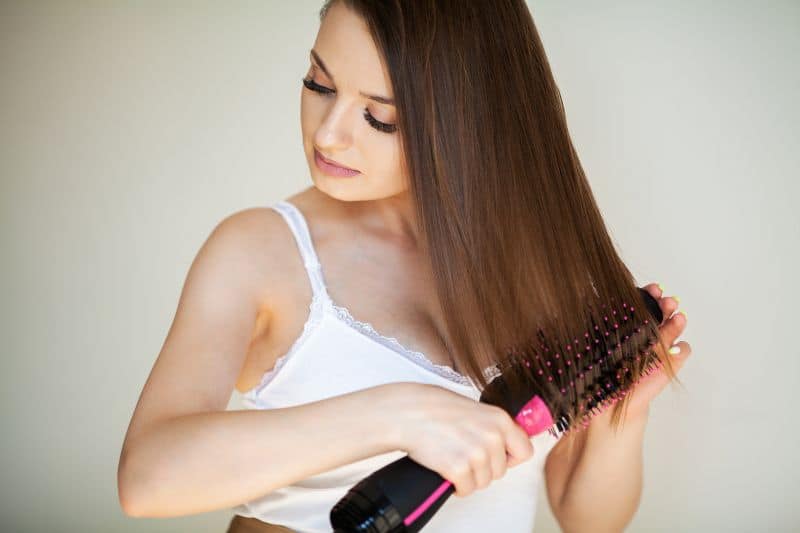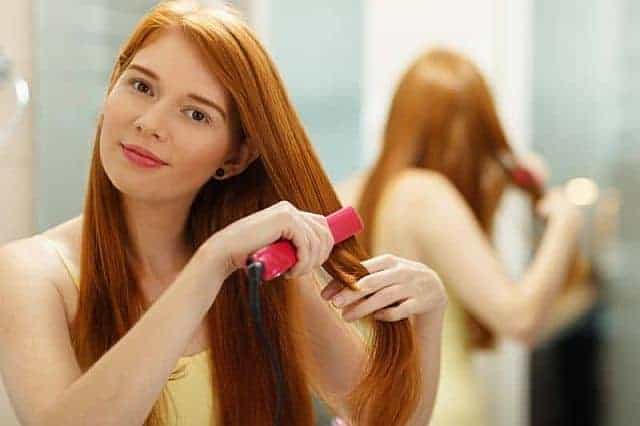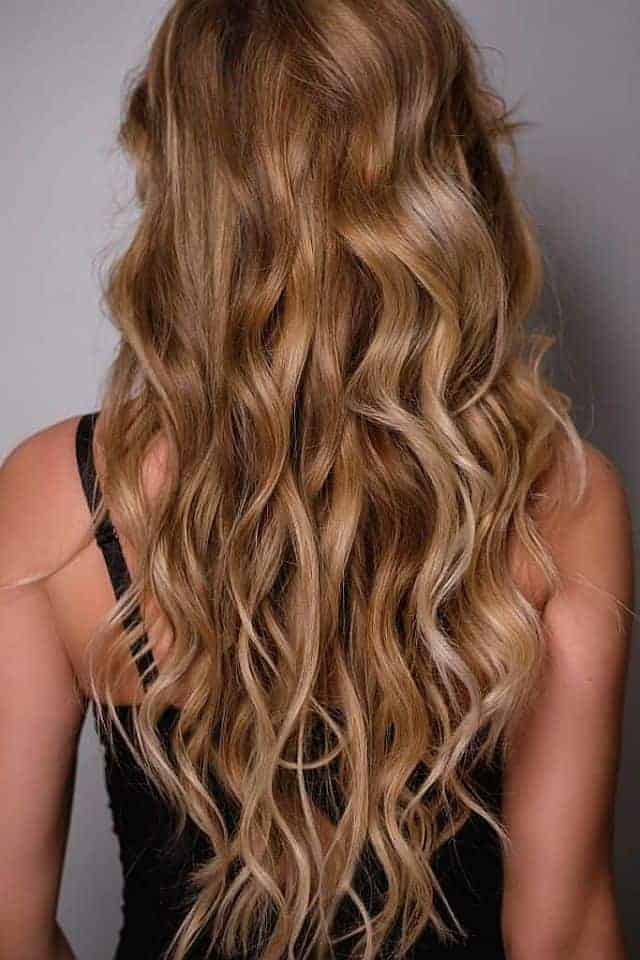Last Updated on January 3, 2023 by Gaga
A leave-in conditioner is a hair care product that is supposed to be applied to freshly washed hair before styling. Unlike a regular conditioner, a leave-in conditioner stays on your hair until the next wash.
A leave-in conditioner conditions every strand of your hair to restore moisture and softness and prepare your locks for styling. People with all types of hair can benefit from using leave-in conditioning treatments but the best candidates are those with dry, frizzy, and over-processed hair.
This product comes in different forms, such as liquids, creams, or sprays. Some lightweight formulas can also be used on dry hair between washes to restore lost moisture and increase hair manageability.

Benefits of Using a Leave-In Conditioner
1. Moisturizes Dry Hair
The main purpose of leave-in conditioners is to provide intense moisture and hydration to your hair. These products are great for kinkier hair types, that need more moisture than a regular conditioner can provide. Leave-in conditioners typically contain humectants that help hydrate and soften dry strands and make them more elastic and stronger. Water-based leave-in conditioners penetrate the hair strand easier than oil-based products and leave hair feeling hydrated and nourished for longer.
2. Detangles Knotted Hair
A good leave-in conditioner contains ingredients that add slip and softness to unruly hair and makes detangling time shorter. If your hair tangles and knots easily, this product helps to release knots and makes hair brushable and easy to style. This helps reduce breakage and retain hair length.

3. Makes Hair More Responsive to Styling
A leave-in conditioner can improve the manageability of your hair, making it easier to style with a blow dryer or a flat iron. It contains ingredients that add texture to the hair and enhance the styling results. This product provides a flexible hold to curly hair and adds that beautiful bounce to your curls. You can reapply it throughout the day to re-moisturize your curls and refresh your style.
4. Protects Hair from Environmental Damage
Too much sun exposure and frequent swimming in chlorinated pools can dehydrate hair, causing color fading, brittleness, and split ends. A generous application of a leave-in conditioner before swimming will keep the chlorine and salt from damaging your hair.
Extreme winter cold outside, followed by dry heat indoors can raise the cuticle and leave hair rough and dry. Leave-in conditioner coats every strand to protect your hair from cold and dry air.
5. Acts as a Barrier Against Heat
Before blow-drying or using hot irons, you need to use a heat protectant to protect your tresses from the damaging effects of heat. Many leave-in conditioners act as heat protectants, providing an extra layer of protection against heat damage. Apply a leave-in conditioner before styling to keep the moisture in your hair and prevent split ends caused by styling.

6. Adds Luster to Color-Treated Hair
A leave-in conditioning treatment revitalizes and smoothes damaged color-treated hair and protects it from harmful sun rays and other environmental factors that can lead to dullness and discoloration. It increases the vibrancy of hair color and leaves your locks with a gorgeous shine. There are special leave-in conditioners formulated for colored hair, that help to seal the color in and make it last longer.
7. Combats Frizz
If you’re dealing with dry and frizzy hair, there is a good chance that you will benefit from adding a leave-in conditioner to your hair care regimen. A good leave-in conditioning treatment provides lasting frizz control by locking moisture in the hair shaft. This product also helps tame flyaway hair caused by static electricity during dry winters.
To keep frizz under control, use a rinse-out conditioner with humectants and apply a leave-in conditioner either to damp or dry hair according to the directions on the bottle.
Differences between Leave-In and Rinse-Out Hair Conditioners
Both types of conditioners help retain hair moisture and soften hair texture for easier combing and styling. Although both products serve the same basic purpose, a leave-in conditioner is not the same as a rinse-out conditioner. It is formulated differently and should be used differently. Here are the primary differences between these two types of conditioners:
Application
Rinse-out hair conditioner is used in the shower just after you rinse out your shampoo and it is supposed to be left in your hair for a couple of minutes. After that time, the product should be rinsed out thoroughly. Otherwise, it can weigh hair down and cause product build-up in your hair.
A leave-in hair conditioner is supposed to stay in the hair for a significant time without rinsing. It is usually applied to towel-dried hair, but there are also lightweight leave-in spray conditioners that you can spray onto dry hair between shampooings. A leave-in conditioner is generally used in smaller amounts than a regular conditioner.
Benefits
Rinse-out conditioners coat the hair’s outer layer, add softness, and help repair damage done by harsh shampoos. They provide moisture by replacing the vital oils in your hair that are lost during the shampooing process. These products also make detangling easier and help tame frizz.
Leave-in conditioners moisturize dry hair and make it softer, smoother, and shinier. They serve as detanglers, styling products, and heat protectants. A leave-in conditioner is one of the most widely used hair products to protect curly hair from dryness.
Consistency
Regular conditioners are thicker and heavier than leave-in treatments. They coat the hair strand with a thick layer that sticks to your tresses after rinsing it out.
Leave-in hair treatments are designed to be more watery and lighter compared to rinse-out conditioners.
Ingredients
Typical ingredients in rinse-out conditioners include fatty acids, surfactants, fatty alcohols, proteins, silicone, plant oils, and high molecular weight silicones.
Leave-in conditioners contain a high level of humectants that attract moisture into the hair. They often contain glycerin, which keeps hair hydrated and lubricated, and volatile silicones, which give your hair shine and smoothness.
How to Use a Leave-in Hair Conditioner?
A leave-in treatment is commonly applied after hair washing. This product works best on damp hair, providing your strands with all the benefits it can offer. You only need to apply a small amount focusing on the ends and other dry areas. A leave-in conditioner also can be sprayed onto toweled dry hair and then combed through the ends. If you have very fine hair, apply a nickel-sized amount on the ends only. After applying the leave-in conditioner, you can style your hair as usual.
Lightweight leave-in sprays are suitable for applying to dry hair between washes to restore moisture and revive the hairstyle.
If you use leave-in hair treatments with silicones, use a good clarifying shampoo occasionally to remove any unwanted residue left behind.

Gaga is a blogger and founder of the Softer Hair website. She often says that insomnia is to blame for her first blogging attempts. Being the night owl, she hated the morning alarm. She left her office job and returned to what she loved most - writing.


wow!there are many sorts of information about leave-in conditioner. It has an amazing impact on our hair. thanks a lot to know this.
Really complete tips on leave-In Conditioner!
Leave in conditioners really improve hair texture. Such a nice article.
I thought conditioner on your hair as heat protectant would fry your hair. It seems like it would to me